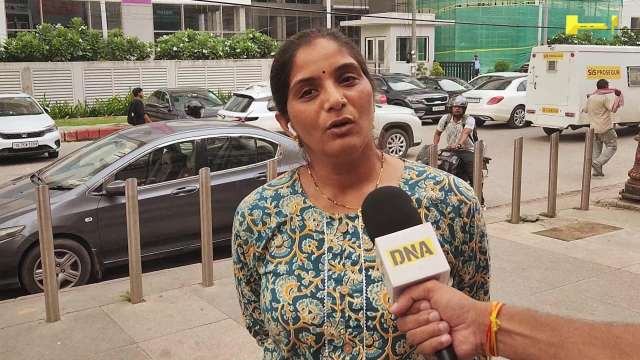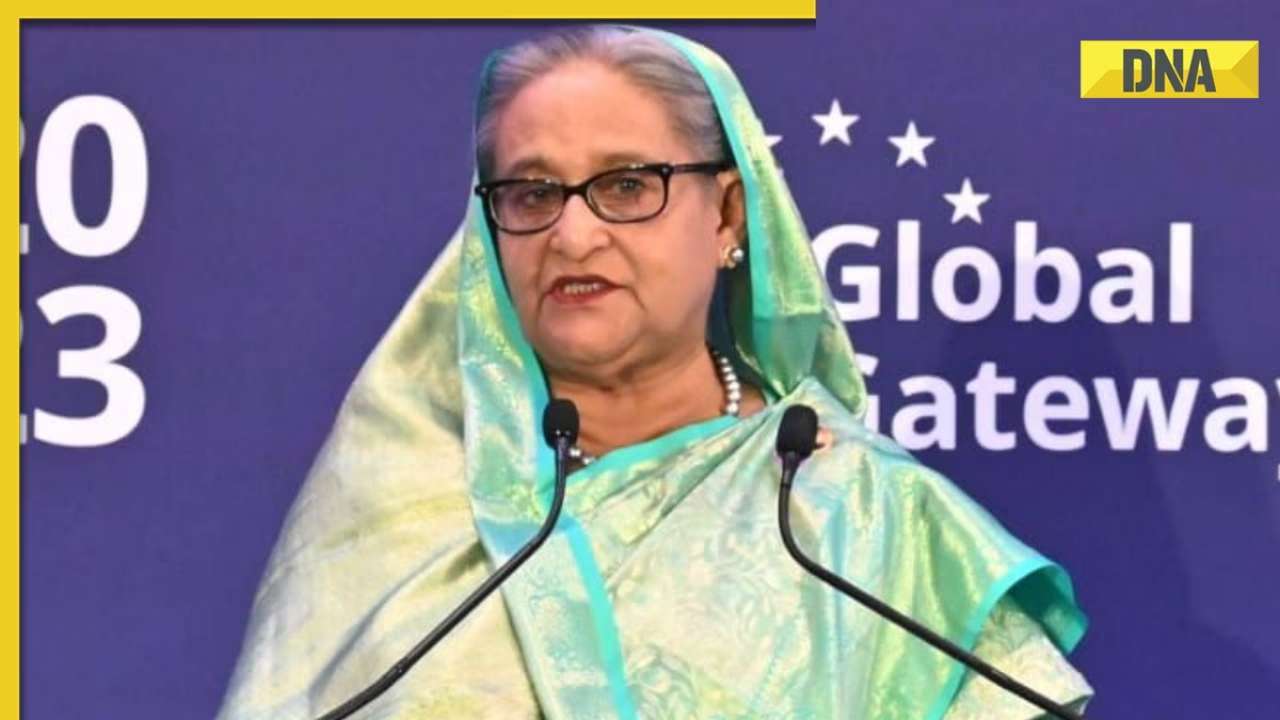While developers in Mumbai are touting construction costs of Rs3,000 per square foot, an Indian-American academician is redefining the benchmarks of affordable housing with his $300 house challenge.
While developers in the city are touting construction costs of Rs3,000 per square foot, an Indian-American academician is redefining the benchmarks of affordable housing with his $300 house challenge.
What started as a blog on Harvard Business Review earlier this year took the shape of a design contest that drew ideas from across the world. The six winners are now ready to unveil the prototypes of homes that cost just $300 (Rs13,500 approx).
“It’s an idea whose time has come. And more than any other place in the world, Mumbai needs innovations like these,” says Dartmouth-based Vijay Govindarajan, founding director of Tuck’s Center for Global Leadership and a visiting professor at Harvard Business School.
The low-cost home is made of mass-produced synthetic materials such as poly-carbonate or fibre. While the area of the prototypes is 225 sq ft, the living space is 10 ft high, and comes with basic provisions like windows for ventilation and sunlight, and solar panels for energy efficiency. Though there is provision for a private shower within the house, common toilets can be accommodated in a separate block for every cluster of homes.
The heat-resistant, rain-resistant and fire-resistant homes come with a water tank, and a scalable design that can be improvised depending on what the occupants can afford. “It is an extension of the concept of reverse innovation, something similar to what the Tatas did while making the Rs1 lakh car, Nano,” says Govindarajan.
Pointing out that there is a huge need for these low-cost homes in Mumbai, where millions of slum-dwellers live in inhuman conditions, Govindarajan believes that the $300 house can change the lives of the poor if all the agencies join hands.
“Corporate entities like the Tatas and the Mahindras, who are keen to contribute to society, should come forward to fund such projects. The government can provide the land and the NGOs can implement the work,” says Govindarajan, who has
offered to donate his time for the venture.
But to really make a difference on the ground, a $300 house alone is enough. Also needed is infrastructure to match. “In Mumbai, people are able to build houses for themselves on even lesser. What they lack are basic amenities like toilets, water and secure tenure,” says New York-based architect Makrand Bhoot, who has also worked with slum dwellers in Mumbai. According to Bhoot, ensuring equitable partnerships with the poor right from the beginning of the project is essential to make such ventures sustainable.
![submenu-img]() After UPSC topper Tina Dabi, IAS officer Smita Sabharwal, UPSC marksheet of IAS Renu Raj goes viral, check her marks..
After UPSC topper Tina Dabi, IAS officer Smita Sabharwal, UPSC marksheet of IAS Renu Raj goes viral, check her marks..![submenu-img]() Meet Harindarpal Singh Banga, who is set to earn Rs 809 crore by selling just 1.4% stake in...
Meet Harindarpal Singh Banga, who is set to earn Rs 809 crore by selling just 1.4% stake in...![submenu-img]() ‘In our part of the world...': EAM Jaishankar to foreign press on PM Modi-Putin hug
‘In our part of the world...': EAM Jaishankar to foreign press on PM Modi-Putin hug![submenu-img]() 'Intention of doing nothing': Ex-Google employee joins Amazon with Rs 3 crore salary, has done zero...
'Intention of doing nothing': Ex-Google employee joins Amazon with Rs 3 crore salary, has done zero...![submenu-img]() Mukesh Ambani's Reliance Jio launches affordable international roaming packs for these countries, check full list
Mukesh Ambani's Reliance Jio launches affordable international roaming packs for these countries, check full list![submenu-img]() Shikhar Dhawan Retirement: शिखर धवन ने लिया इंटरनेशनल क्रिकेट से सन्यास, VIDEO के जरिए कहा अलविदा
Shikhar Dhawan Retirement: शिखर धवन ने लिया इंटरनेशनल क्रिकेट से सन्यास, VIDEO के जरिए कहा अलविदा![submenu-img]() Uttarakhand Nurse Rape Murder: पुलिस की कार्रवाई पर उठे सवाल, उत्तराखंड में भी कोलकाता जैसा मामला, जानिए क्या है पूरा केस
Uttarakhand Nurse Rape Murder: पुलिस की कार्रवाई पर उठे सवाल, उत्तराखंड में भी कोलकाता जैसा मामला, जानिए क्या है पूरा केस![submenu-img]() Kolkata Rape-Murder Case: 'पूर्व प्रिंसिपल ने घटना वाली रात किया था फोन', पीड़िता के पिता ने किया खुलासा
Kolkata Rape-Murder Case: 'पूर्व प्रिंसिपल ने घटना वाली रात किया था फोन', पीड़िता के पिता ने किया खुलासा![submenu-img]() कोलकाता रेप-मर्डर केस: पीड़िता के माता-पिता ने CBI जांच पर जताया भरोसा, पुलिस पर उठाए सवाल
कोलकाता रेप-मर्डर केस: पीड़िता के माता-पिता ने CBI जांच पर जताया भरोसा, पुलिस पर उठाए सवाल![submenu-img]() Weather Update: Delhi-NCR में वीकेंड पर बरसेंगे बादल, यूपी-राजस्थ�ान समेत इन राज्यों में IMD ने जारी किया अलर्ट
Weather Update: Delhi-NCR में वीकेंड पर बरसेंगे बादल, यूपी-राजस्थ�ान समेत इन राज्यों में IMD ने जारी किया अलर्ट ![submenu-img]() After UPSC topper Tina Dabi, IAS officer Smita Sabharwal, UPSC marksheet of IAS Renu Raj goes viral, check her marks..
After UPSC topper Tina Dabi, IAS officer Smita Sabharwal, UPSC marksheet of IAS Renu Raj goes viral, check her marks..![submenu-img]() Meet woman who married at 16, faced domestic abuse, did odd jobs as a single mom, then became IAS officer, is posted...
Meet woman who married at 16, faced domestic abuse, did odd jobs as a single mom, then became IAS officer, is posted...![submenu-img]() Drishti IAS founder Vikas Divyakirti to shut down his UPSC exam coaching centre due to...
Drishti IAS founder Vikas Divyakirti to shut down his UPSC exam coaching centre due to...![submenu-img]() Meet IAS officer who failed in school exams, but cracked UPSC in first attempt at 22, secured AIR...
Meet IAS officer who failed in school exams, but cracked UPSC in first attempt at 22, secured AIR...![submenu-img]() What was Drishti IAS founder Vikas Divyakirti's rank in UPSC? He cleared the exam in how many attempts?
What was Drishti IAS founder Vikas Divyakirti's rank in UPSC? He cleared the exam in how many attempts?![submenu-img]() Tripura Floods: 12 Killed, Over 300 Rescued As Heavy Rains Causes Severe Flooding In Tripura
Tripura Floods: 12 Killed, Over 300 Rescued As Heavy Rains Causes Severe Flooding In Tripura![submenu-img]() Kolkata Doctor Murder: Are Indian Rape Laws Enough? Public Opinion On Stricter Measures
Kolkata Doctor Murder: Are Indian Rape Laws Enough? Public Opinion On Stricter Measures![submenu-img]() PM Modi In Poland: Calls For 'Restoration Of Peace' Amid Russia-Ukraine War | Warsaw
PM Modi In Poland: Calls For 'Restoration Of Peace' Amid Russia-Ukraine War | Warsaw![submenu-img]() Neeraj Chopra Bags Second Spot In Lausanne Diamond League 2024, Surpasses Paris Olympic Throw
Neeraj Chopra Bags Second Spot In Lausanne Diamond League 2024, Surpasses Paris Olympic Throw![submenu-img]() Surat Metro Construction Mishap: Crane Topples Onto Vacant Building, No Casualties Reported
Surat Metro Construction Mishap: Crane Topples Onto Vacant Building, No Casualties Reported![submenu-img]() What is the price, length and weight of Neeraj Chopra and Olympic gold medalist Arshad Nadeem's javelin?
What is the price, length and weight of Neeraj Chopra and Olympic gold medalist Arshad Nadeem's javelin?![submenu-img]() Meet Archana Kamath Olympian who created history in Paris quits playing forever at 24 due to...
Meet Archana Kamath Olympian who created history in Paris quits playing forever at 24 due to...![submenu-img]() Amid rumours to join politics, Vinesh Phogat's new post goes viral, here's what she said
Amid rumours to join politics, Vinesh Phogat's new post goes viral, here's what she said![submenu-img]() Where is Olympics Gold medalist Arshad Nadeem? Will he challenge Neeraj Chopra at Diamond League?
Where is Olympics Gold medalist Arshad Nadeem? Will he challenge Neeraj Chopra at Diamond League?![submenu-img]() Vinesh Phogat to enter politics? Report says she is likely to contest against...
Vinesh Phogat to enter politics? Report says she is likely to contest against...![submenu-img]() Indian sportspersons with highest brand value in 2024
Indian sportspersons with highest brand value in 2024![submenu-img]() Fake garlic or real? Here are 6 ways to identify
Fake garlic or real? Here are 6 ways to identify![submenu-img]() Streaming This Week: Kalki 2898 AD, Angry Young Men, Raayan, Follow Kar Lo Yaar, latest OTT releases to binge-watch
Streaming This Week: Kalki 2898 AD, Angry Young Men, Raayan, Follow Kar Lo Yaar, latest OTT releases to binge-watch![submenu-img]() Meet actress who replaced OG Stree in Stree 2, worked as makeup artist, debuted with Amitabh Bachchan in..
Meet actress who replaced OG Stree in Stree 2, worked as makeup artist, debuted with Amitabh Bachchan in..![submenu-img]() Meet Salman's heroine who gave 16 back to back flops, converted to Islam for love; left films, now looks unrecognisable
Meet Salman's heroine who gave 16 back to back flops, converted to Islam for love; left films, now looks unrecognisable![submenu-img]() ‘In our part of the world...': EAM Jaishankar to foreign press on PM Modi-Putin hug
‘In our part of the world...': EAM Jaishankar to foreign press on PM Modi-Putin hug![submenu-img]() Amit Shah asks 10 questions to Rahul Gandhi after Congress’ alliance with NC in J&K, says, 'risking nation's unity for…'
Amit Shah asks 10 questions to Rahul Gandhi after Congress’ alliance with NC in J&K, says, 'risking nation's unity for…'![submenu-img]() Kolkata rape-murder case: CCTV footage captures accused Sanjoy Roy on night of crime
Kolkata rape-murder case: CCTV footage captures accused Sanjoy Roy on night of crime![submenu-img]() 'India was never neutral in this war, always...': PM Modi to Ukrainian President Zelenskyy
'India was never neutral in this war, always...': PM Modi to Ukrainian President Zelenskyy![submenu-img]() Waqf Bill Row: Nitish Kumar's JDU becomes 3rd BJP ally to oppose the amendment law; know all about the bill here
Waqf Bill Row: Nitish Kumar's JDU becomes 3rd BJP ally to oppose the amendment law; know all about the bill here![submenu-img]() Jammu and Kashmir Assembly elections: What is delimitation that paved the road for these Elections?
Jammu and Kashmir Assembly elections: What is delimitation that paved the road for these Elections?![submenu-img]() Wings of Refuge: Rafales escort Hasina to safety
Wings of Refuge: Rafales escort Hasina to safety![submenu-img]() Bangladesh in a crisis: A coup, protests and a fleeing Prime Minister
Bangladesh in a crisis: A coup, protests and a fleeing Prime Minister![submenu-img]() DNA Explainer: What is Waqf Board Act and why does Modi government want to amend it?
DNA Explainer: What is Waqf Board Act and why does Modi government want to amend it?![submenu-img]() DNA Explainer: Why is Bangladesh burning again?
DNA Explainer: Why is Bangladesh burning again?













































)
)
)
)
)
)
)
)
)
)
)
)
)
)





)
)
)
)
)
)